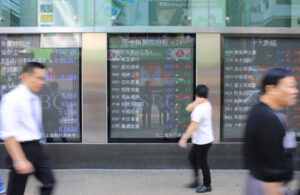Breaking News: Ontario’s Bold Move on Electricity Exports
Extreme Investor Network Exclusive
In a striking development that could reshape energy dynamics across North America, Ontario has announced a 25% export tax on electricity to the United States. This decision, reported by the Wall Street Journal, affects approximately 1.5 million households in states like Minnesota, Michigan, and New York. This bold action is seen as a retaliatory measure in response to tariffs imposed by the Trump administration.
Why does this matter? The electricity export tax will likely lead to increased energy costs for millions of consumers and businesses in these states. As the ripple effects of this tax unfold, potential increases in utility bills could dramatically influence spending patterns, potentially exacerbating inflationary pressures already being felt in the economy.
The Broader Economic Landscape
While Ontario’s move could spell trouble for consumers, it is just one part of a much larger narrative. As tensions escalate in the trade war, China is not sitting idly by. In a counteraction, China has targeted the U.S. agricultural sector with new levies, raising eyebrows and concerns among American farmers. This tit-for-tat approach raises fears that U.S. import prices may surge, further driving up inflation.
Indeed, the outlook for the U.S. economy is under significant strain, with the probability of a recession in 2025 climbing to a staggering 43%, the highest level since November. The looming cloud of tariffs, coupled with inflationary anxieties, may prompt the Federal Reserve to reconsider its rate cut strategy, a crucial lever in managing economic growth.
Encouraging Signs from U.S. Commerce Secretary
In what could be perceived as a silver lining amid rising tensions, U.S. Commerce Secretary Lutnick hinted at possible tariff rollbacks on Canada and Mexico. Initially, President Trump had issued threats to escalate tariffs on Canada in response to its countermeasures. A potential truce could offer some relief and restore a degree of stability to cross-border trade, but uncertainty lingers in the air.
The Asian Market Response
As these developments unfolded, the Asian markets braced for volatility. Each tweet, press conference, and economic report is becoming increasingly consequential in an interconnected global economy. Investors need to stay vigilant, as the tone set by the U.S. economic landscape will reverberate through Asian markets and beyond.
Beijing’s Response: A Focused Growth Strategy
Shifting gears to the other side of the globe, Beijing has introduced its 2025 economic growth target, aiming for around 5%. This target comes amid rising trade tensions with the U.S., and it’s clear that China is preparing to navigate the uncertainties ahead. The Chinese government has committed to implementing additional fiscal measures to counteract deflationary threats alongside the impact of U.S. tariffs. This proactive approach includes a range of economic incentives designed to stimulate growth and preserve job security within its borders.
Conclusion: Navigating the Trading Battlefield
As investors, staying informed is crucial in these rapidly changing times. The unfolding saga of tariffs, retaliatory measures, and international diplomacy is not just political theater; it has real impacts on your investment portfolio, consumer prices, and the broader economy.
At Extreme Investor Network, we’re committed to providing you with up-to-the-minute analysis and insights that can empower your investment decisions. Understanding the nuances of global trade developments and their implications on the market can be the key differentiator for savvy investors looking to navigate this complex landscape.
Stay connected, stay informed, and let’s navigate these turbulent waters together.

